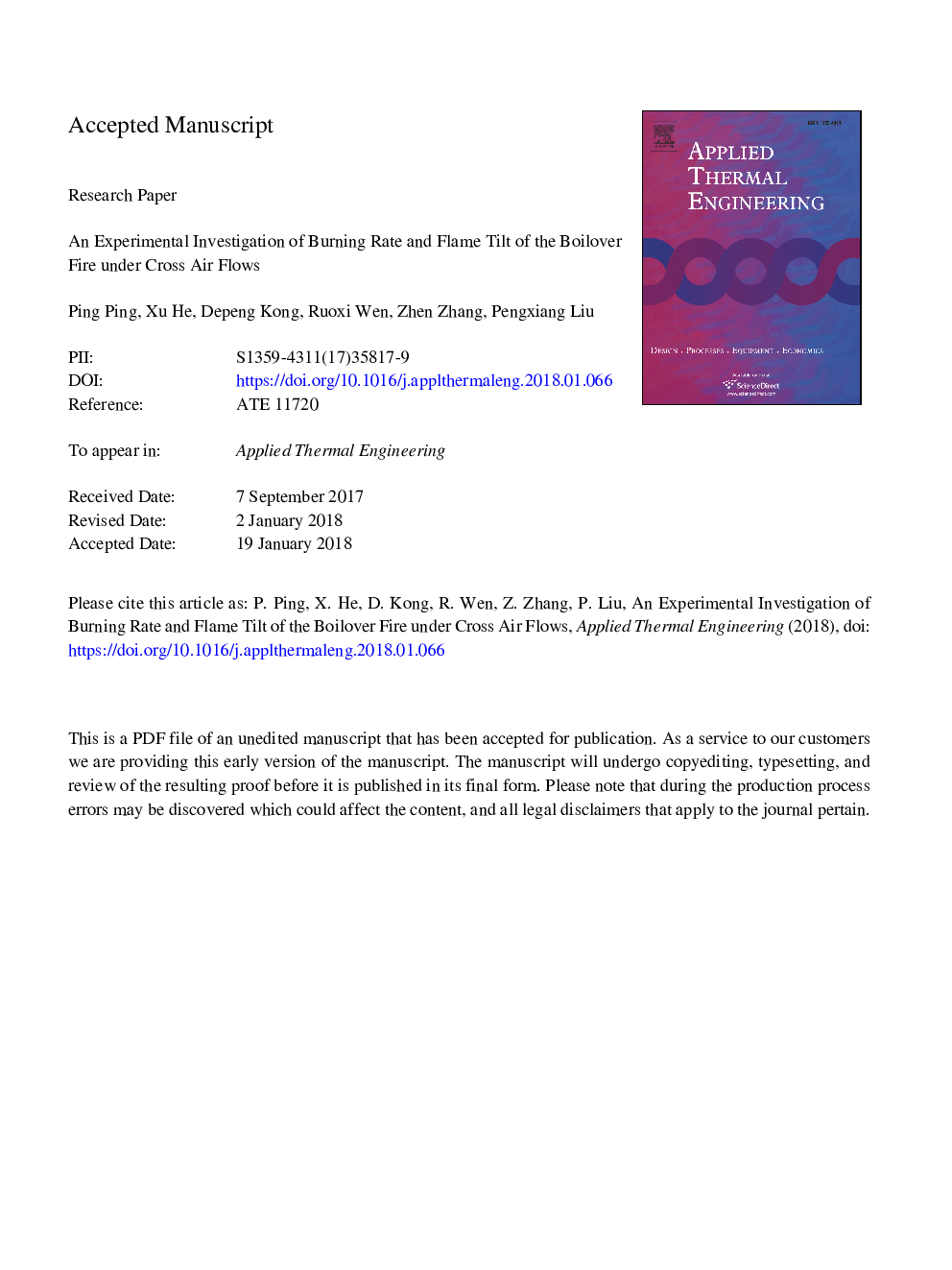| Article ID | Journal | Published Year | Pages | File Type |
|---|---|---|---|---|
| 7045935 | Applied Thermal Engineering | 2018 | 29 Pages |
Abstract
This paper presents an experimental investigation on mass burning rate and flame geometry characteristics of crude oil boilover fire under cross air flows. Three circular steel trays with different diameters, filled with crude oil with different initial layer thickness were used in this experiment. The cross air flow speed ranges from 0 to 1.5â¯m/s. The mass burning rates, flame length and tilt angle in the steady stage and boilover stage were recorded. The results show that the response of steady mass burning rate to cross air flow speed showed a non-monotonic trend, which firstly decreased and then increased with the critical cross air flow speed of 1.0â¯m/s. The boilover mass burning rate also shows a similar non-monotonic response to the cross air flow speed, with a critical value of 0.5â¯m/s. Such change trends are discussed based on the physical change of the dominant controlling mechanism in the heat feedback. An improved Thomas model was developed for the correlation of flame length in boilover stage to account for the initial fuel layer thickness effects. The flame tilt angles in steady stage and boilover stage are correlated well based on the tangent value of the angle.
Related Topics
Physical Sciences and Engineering
Chemical Engineering
Fluid Flow and Transfer Processes
Authors
Ping Ping, Xu He, Depeng Kong, Ruoxi Wen, Zhen Zhang, Pengxiang Liu,
